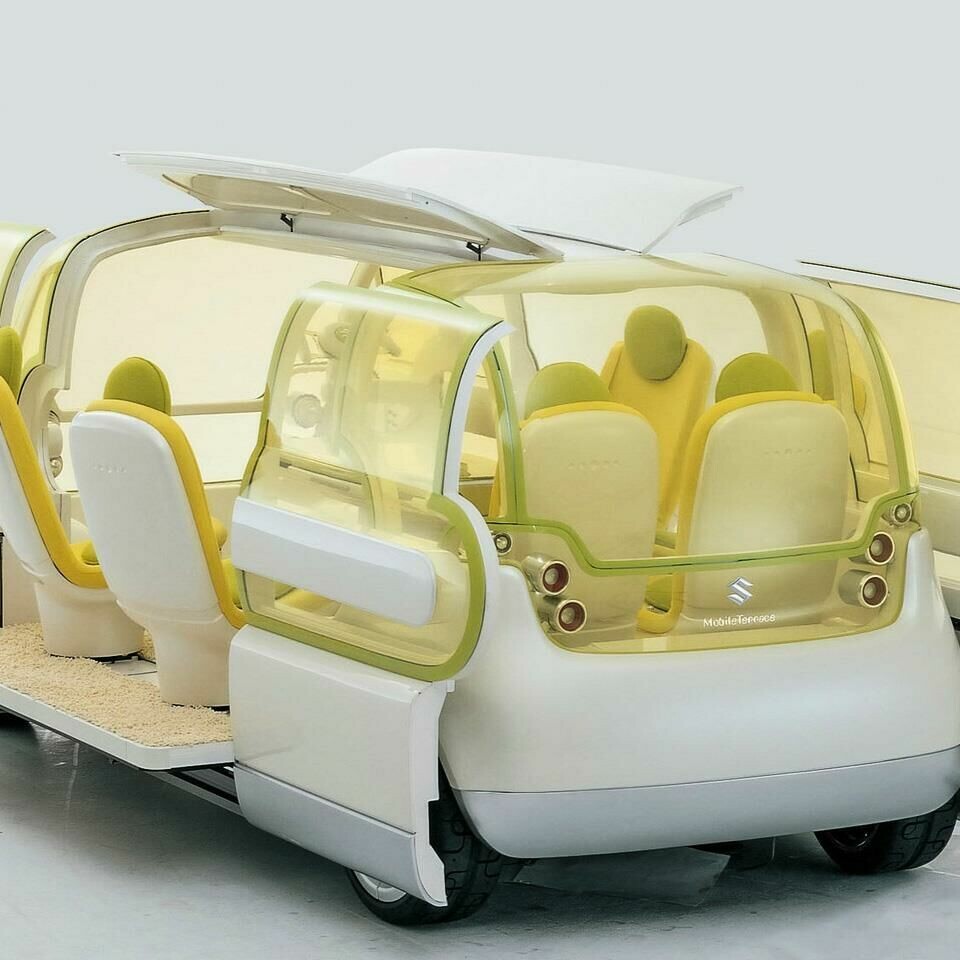
Concept Car of the Week: Suzuki Mobile Terrace (2003)
The anti-car mobile room that continues to appeal
The Suzuki AirTriser was our star of last year’s Tokyo motor show, but it’s not the first time the idea of a compact van that could be converted into a mobile lounge has proved a hit for the company from Hamamatsu. Twelve years earlier, Suzuki had been even more daring with its highly conceptual Mobile Terrace.

This four-metre-long, six-seat capsule was designed for casual gatherings, with a strong relationship to the outdoors. A walk around the Mobile Terrace revealed its product-like shape and demeanour which had no discernible front or rear – indeed, the front and rear are almost identical, while its sides are symmetrical. This was all part of the ‘anti-car’ design statement, with non-directional forms, and strong curving geometries that resolved themselves in a neutral way around the form in bilateral symmetry. The Mobile Terrace has much more in common with an architectural pavilion than a car.

The dynamism of the design revealed itself upon entry. Large doors slid on each side, while the roof raised in a gullwing style in tandem with the lowering rockers. No building would offer such a generous and welcoming entry sequence. The previously closed capsule form unfolds in space into a composition of planes – a kind of reverse origami in which the lumpy capsule-like cocoon breaks apart to reveal a butterfly.

Once inside, one could settle into the rather traditional three-row seating arrangement and travel with great (yellow-tinted) views out of the expansive glasshouse. The low beltline and extension of glazing right to the front and rear fascias eliminated any sense of claustrophobia and perfectly encapsulated the concept of prospect and refuge we’ve previously covered. The Mobile Terrace is all about prospect – of seeing and being seen.

Once parked in a desirable location, the Mobile Terrace unfolded to embody its name, emulating Japanese architecture with its shoji screens that can slide out of the way to open to the landscape beyond. With its bodysides open, the seats could rearrange around the IP which in turn transformed into a table, its 22-inch touchscreen becoming a portal to worlds of gaming and the internet.

The Mobile Terrace would not have been possible without General Motors providing Suzuki with a version of its much-lauded Hy-Wire skateboard chassis. This low-slung modular system consolidated all the hydrogen propulsion and controls of a car into one flat chassis, nicknamed the skateboard by GM engineers. The goal was to create a long-lasting armature for propulsion, with interchangeable bodies for different situations. The system also included advanced drive-by-wire technology that allowed driving controls to be placed anywhere in the car. Traditional brake pedal, accelerator, and gear shift are not present – they are incorporated into the steering wheel. For the Mobile Terrace, this allowed for a great deal of useable volume unencumbered by controls, transmission, and engine.

Looking back from over a decade on, it is easy to dismiss the day-glo yellow and green Mobile Terrace as a whimsical design study. But with its high tech propulsion and controls, the innovative packaging, and well-resolved details, it perhaps deserves a reconsideration. Its interior is similar in concept, if not styling, to the Mercedes F 015. It also grapples with some of the same questions raised by the newer (and larger) Mercedes – issues of social space, cockpit versus lounge, prospect and refuge.




